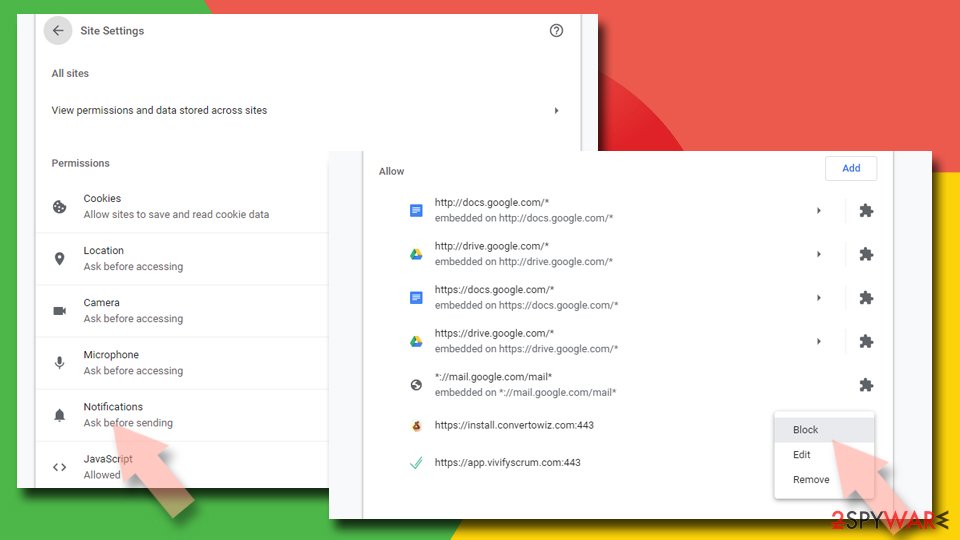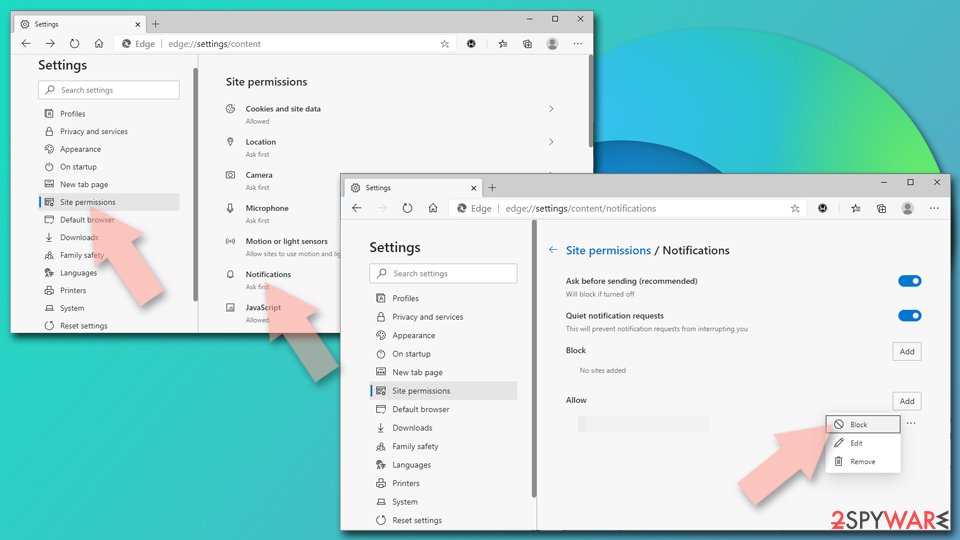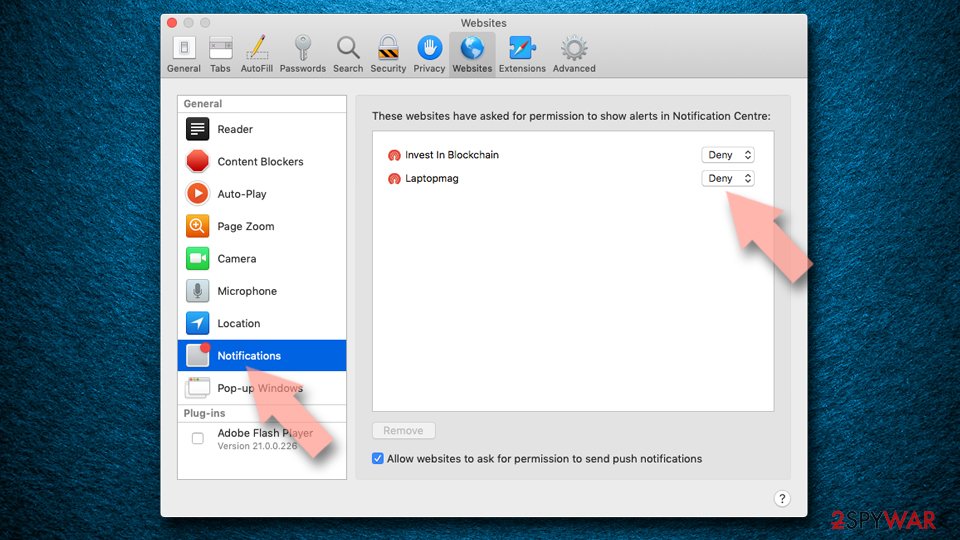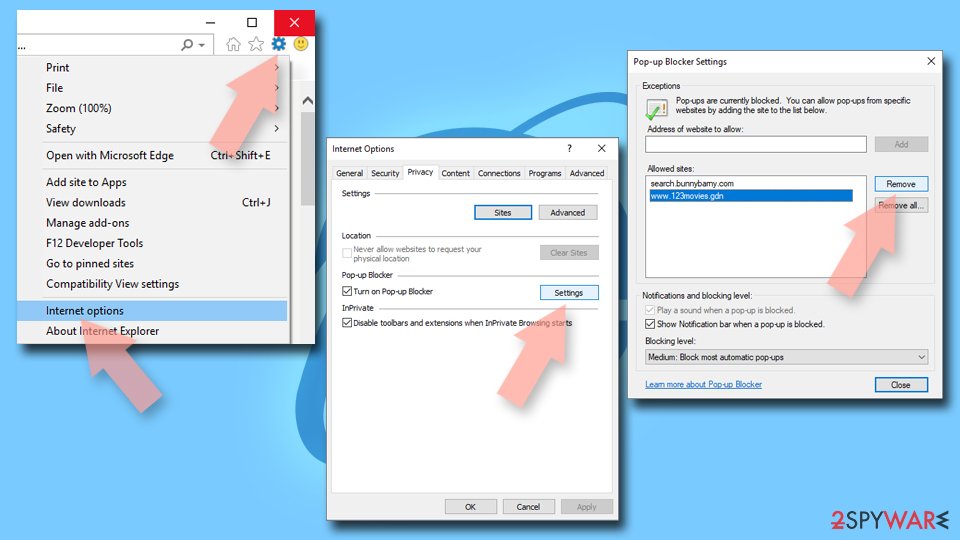Domnews.online ads (scam) - Free Instructions
Domnews.online ads Removal Guide
What is Domnews.online ads?
Domnews.online shows fake messages to trick users into subscribing to push notifications

Domnews.online is only one of the countless push notification fraud websites on the internet. It was designed by fraudsters in an effort to trick users into clicking the “Allow” button in the prompt that appears at the top of the page immediately after entry. Some puzzled users would fall for the ploy and follow instructions, in which case unexpected pop-ups would start to appear on their devices.
We advise against clicking on any suspicious Domnews.online ads on your PC. Fake websites like this one frequently display deceptive or harmful links, which might drive users to subscribe to additional spam, spend money on pointless services, or even download malware onto their computers. This article provides more information about how the scam is operated and how to get rid of push notifications and possible infections effectively.
| Name | Domnews.online |
| Type | Push notifications, ads, scam, pop-ups |
| Distribution | Push notifications show up at some point after the “Allow” button in the notification prompt is clicked |
| Symptoms | Notifications show up at the bottom-right corner of the screen – these include fraudulent content and links to potentially dangerous websites |
| Risks | Push notification prompts might include links to malicious websites, resulting in financial losses, personal information disclosure, or malware infections |
| Removal | Removing push notifications from your desktop requires you to access browser settings and block the website URL. Scanning the system with SpyHunter 5Combo Cleaner is also recommended to check it for adware or malware infections |
| Other tips | By cleaning web browser caches and web data, you would ensure that third parties can no longer track you – use FortectIntego for this task |
How do users get exposed to online fraud?
Users don't purposefully go to websites like Domnews.online; if the URL were entered in the address bar, nothing would happen. Instead, users are unintentionally routed there, which benefits fraudsters as errors are considerably more likely to occur under these conditions.
The most likely cause of a redirect is clicking on a malicious link elsewhere. Peer-to-peer[1] networks, for instance, are infamous for using fake “Download” buttons and bogus URLs that ultimately direct users to potentially harmful websites. High-risk websites sometimes use automated scripts to redirect visitors without requiring them to take any action – they may see redirects through several URLs until they reach the landing page, which could be Domnews.online.
Given the fact that these websites are frequently infected with malware and may even link to other harmful websites, we advise avoiding them. Installing a trustworthy ad-blocking app in conjunction with security software could make a huge difference when it comes to avoiding malicious scripts and links online.
The push notification scam in detail
Since most people end up on suspicious websites unexpectedly, they are caught off guard, which makes them more prone to making mistakes. What they see next is what looks like a simple request to confirm they are humans or that they are of age. These aspects are clear social engineering tricks that are so commonly employed in online fraud schemes.
The main goal for them is to make sure that the “Allow” button and the whole prompt are presented as something that has an entirely different function from the real one. For this to work, crooks use predetermined messages and images that often come up on so many other push notification scam sites (e.g., News-wuweci.cc, Week-tale.xyz, Garnly.com) as such:
- If you are 18+, click Allow
- Click Allow to confirm that you are not a robot
- Click “Allow” to win the prize and get it in our shop!
- Can't play this video! Perhaps your browser doesn't allow video playback. Please click the Allow button to watch the video
- Your file is ready to download – press Allow to continue.

A push notification prompt will always result in push notifications being permitted on your device, so please remember this. This implies that Domnews.online may send you any type of information via the browser's API,[2] including links and phony messages, as long as the browser is open (or idle in the background). Luckily, dealing with these notifications is not that difficult, as long as you know what you have to do to stop them – we explain everything in detail in the next section.
How to get rid of the annoying ads
While users usually end up on scam websites after an unfortunate redirect, phishing websites might come up more often when the system is infected with adware. This is particularly true if you also see additional questionable behavior like pop-ups, offers, coupons, sponsored links, rerouting through dubious web addresses when browsing the internet, etc.
Therefore, we advise you to complete a system scan using SpyHunter 5Combo Cleaner, Malwarebytes, or another potent security program. That would not only guarantee that your system is free of malware such as adware, browser hijackers, trojans, backdoors,[3] and other threats, but it would also make future malware infestations less likely. We advise utilizing FortectIntego to clean browsers and repair any possible virus damage once possibly undesirable and hazardous apps have been removed.
In order to get rid of annoying push notifications, you need to access browser settings and block Domnews.online URL. Find the section for the browser you are using and perform the following steps:
Google Chrome (desktop)
- Open the Google Chrome browser and go to Menu > Settings.
- Scroll down and click on Advanced.
- Locate the Privacy and security section and pick Site Settings > Notifications.
- Look at the Allow section and look for a suspicious URL.
- Click the three vertical dots next to it and pick Block. This should remove unwanted notifications from Google Chrome.

Google Chrome (Android)
- Open Google Chrome and tap on Settings (three vertical dots).
- Select Notifications.
- Scroll down to the Sites section.
- Locate the unwanted URL and toggle the button to the left (Off setting).

Mozilla Firefox
- Open Mozilla Firefox and go to Menu > Options.
- Click on Privacy & Security section.
- Under Permissions, you should be able to see Notifications. Click the Settings button next to it.
- In the Settings – Notification Permissions window, click on the drop-down menu by the URL in question.
- Select Block and then click on Save Changes. This should remove unwanted notifications from Mozilla Firefox.

MS Edge (Chromium)
- Open Microsoft Edge, and go to Settings.
- Select Site permissions.
- Go to Notifications on the right.
- Under Allow, you will find the unwanted entry.
- Click on More actions and select Block.

Safari
- Click on Safari > Preferences…
- Go to the Websites tab and, under General, select Notifications.
- Select the web address in question, click the drop-down menu and select Deny.

Internet Explorer
- Open Internet Explorer, and click on the Gear icon at the window's top-right.
- Select Internet options and go to the Privacy tab.
- In the Pop-up Blocker section, click on Settings.

- Locate the web address in question under Allowed sites and pick Remove.
How to prevent from getting adware
Access your website securely from any location
When you work on the domain, site, blog, or different project that requires constant management, content creation, or coding, you may need to connect to the server and content management service more often. The best solution for creating a tighter network could be a dedicated/fixed IP address.
If you make your IP address static and set to your device, you can connect to the CMS from any location and do not create any additional issues for the server or network manager that needs to monitor connections and activities. VPN software providers like Private Internet Access can help you with such settings and offer the option to control the online reputation and manage projects easily from any part of the world.
Recover files after data-affecting malware attacks
While much of the data can be accidentally deleted due to various reasons, malware is one of the main culprits that can cause loss of pictures, documents, videos, and other important files. More serious malware infections lead to significant data loss when your documents, system files, and images get encrypted. In particular, ransomware is is a type of malware that focuses on such functions, so your files become useless without an ability to access them.
Even though there is little to no possibility to recover after file-locking threats, some applications have features for data recovery in the system. In some cases, Data Recovery Pro can also help to recover at least some portion of your data after data-locking virus infection or general cyber infection.
- ^ James Cope. What's a Peer-to-Peer (P2P) Network?. Computerworld. IT news, careers, business technology, reviews.
- ^ Application Programming Interface (API). IBM. Cloud Learn Hub.
- ^ Backdoor (computing). Wikipedia. The free encycopedia.
